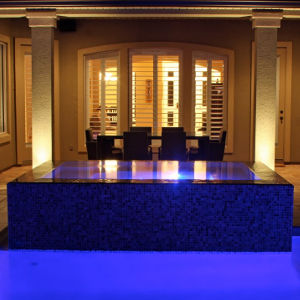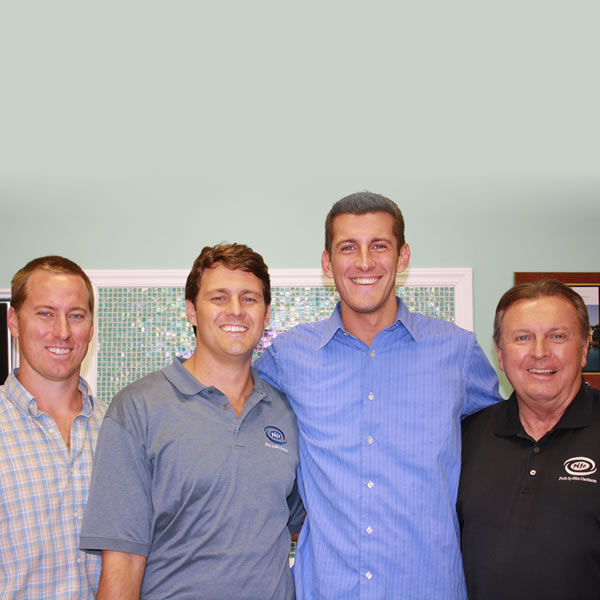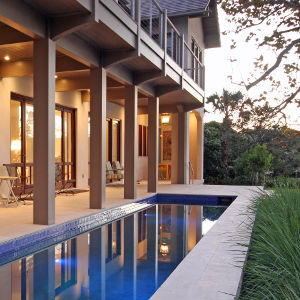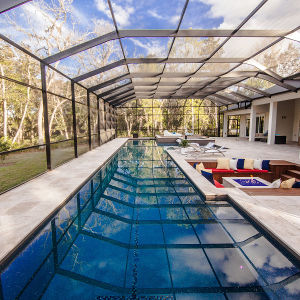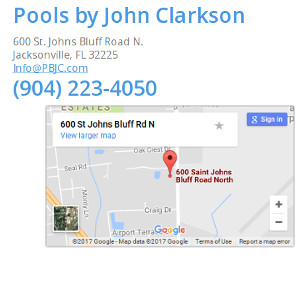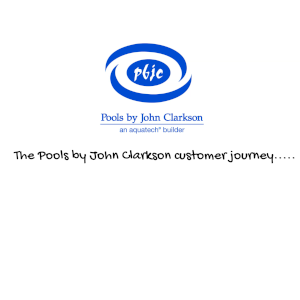From The Experts: Pool Maintenance and Care
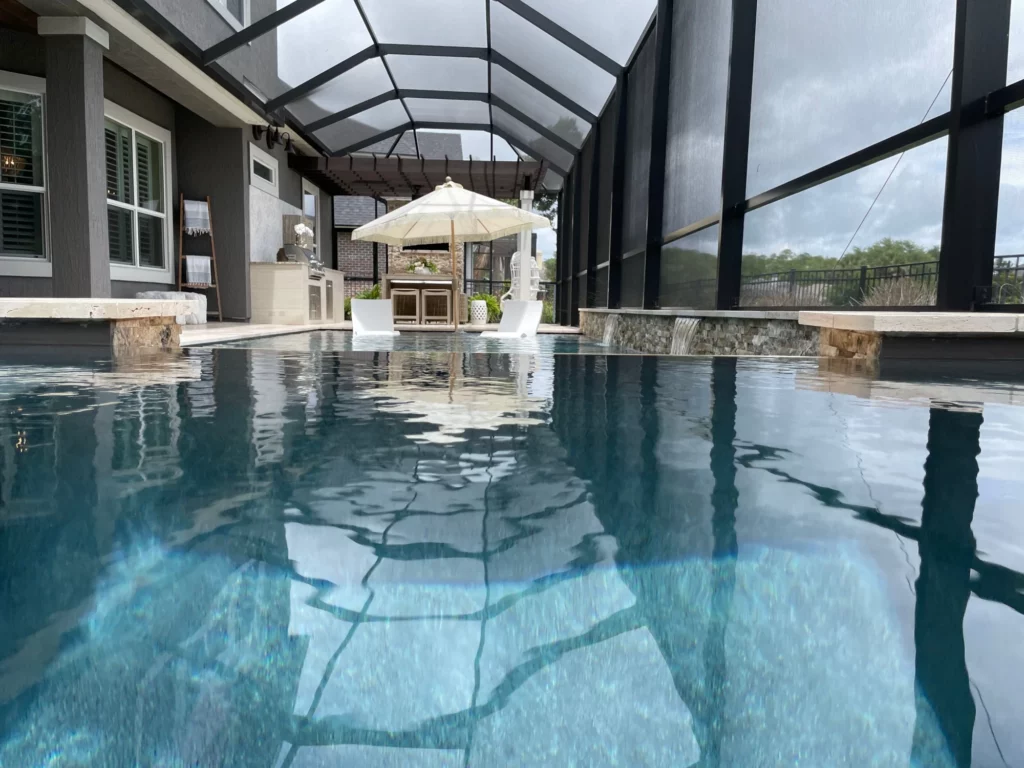
When it comes to pool maintenance, no one size fits all and precision is the key to success. After all, installing a pool is an investment just as much as it is a lifestyle and commitment. Luckily, Pools by John Clarkson has been a leading expert in pool maintenance and care in Jacksonville, Florida since 1989. The keys to good pool care are a quality filtration system, cleaning of debris, and maintaining chemical balance. We’re going to talk through how to increase longevity and keep your gorgeous new investment maintained and up to par!
Filtration
Filtration systems are there to keep water clear of dirt, debris, and other contaminants that can cloud or pollute water chemistry. At Pools by John Clarkson, we provide cartridge filters on all of our pools because of the many advantages they offer over other types of filtration media:
- Better Filtration Efficiency: Cartridge filters can capture particles as small as 10-15 microns, providing superior filtration compared to sand filters.
- Energy Efficiency: Cartridge filters generally have lower operating costs as they require less energy to pump water through the filter media. Combined with a variable-speed pool pump, it offers the most energy-efficient filtration possible.
- Compact Design: Cartridge filters are more compact than other filter types, which helps significantly in reducing equipment space needed and overall aesthetics of the equipment area.
- Easily Replaceable Filter Media: Cartridge elements can last for several years before requiring replacement, and changing the filter element is so fast and easy that most any homeowner can do it.
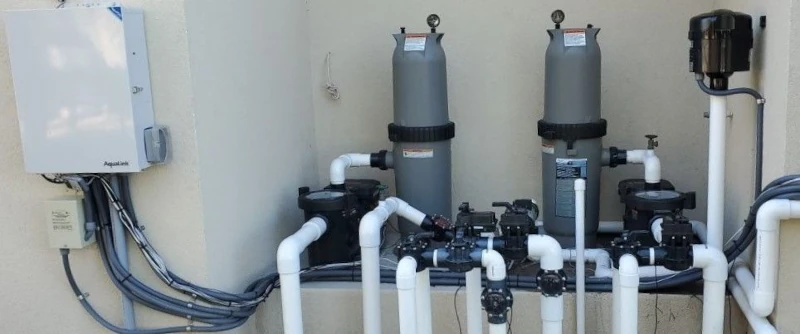
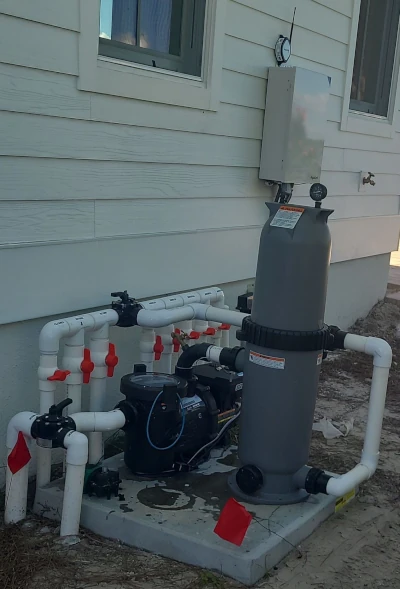
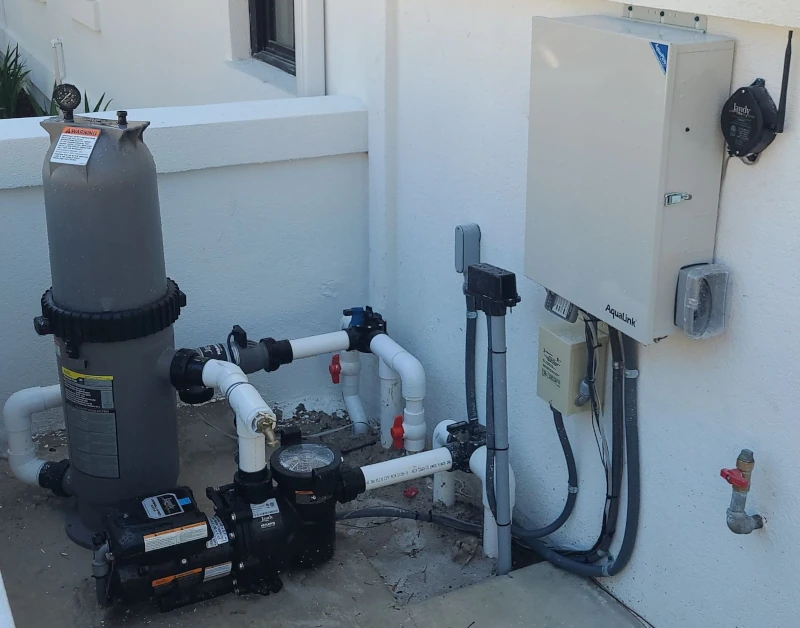
Debris Cleaning
No one wants to head out for a sunny day swim and find the pool filled with dirt and leaves. Enter: state-of-the-art automatic cleaning systems that will keep you and your pool happy!
Pressure Side Cleaners – Good
These cleaners are powered by the pressure of the water returning to the pool and are inherently safer than suction side cleaners because they present virtually no risk of suction entrapment. They do an adequate job of removing debris, but have parts that are prone to jamming that reduce cleaning efficiency and can cause homeowner frustration.
Electric Robotic Cleaners – Better
A robotic cleaner is essentially a Roomba for your pool. These have gained in popularity over recent years thanks to their trouble-free operation, ease of use, and quality of cleaning, even corners and pool walls. And because they don’t require any plumbing, it’s a drop-in solution that works in any pool!
In-Floor Cleaning System – Best!
Popup spray heads are installed throughout the pool on the floors, steps, and walls that will rotate a stream of water to send debris towards the main drain where it can then be filtered free of debris. In-floor cleaning is automatic and operates nearly invisibly. As an added benefit, it also provides the best possible circulation of pool water, aiding in filtrating and significantly improving pool heating efficiency. In-floor cleaning can only be installed during installation, so if your still in the design phase, this is a great option to consider.
Suction-Side Cleaner – BAD!
Suction side cleaners are not sold or recommended by Pools by John Clarkson. Because they are tied into the pump’s suction line, they can create a suction hazard for anything or anyone in the pool. Because of this risk, they are best avoided.
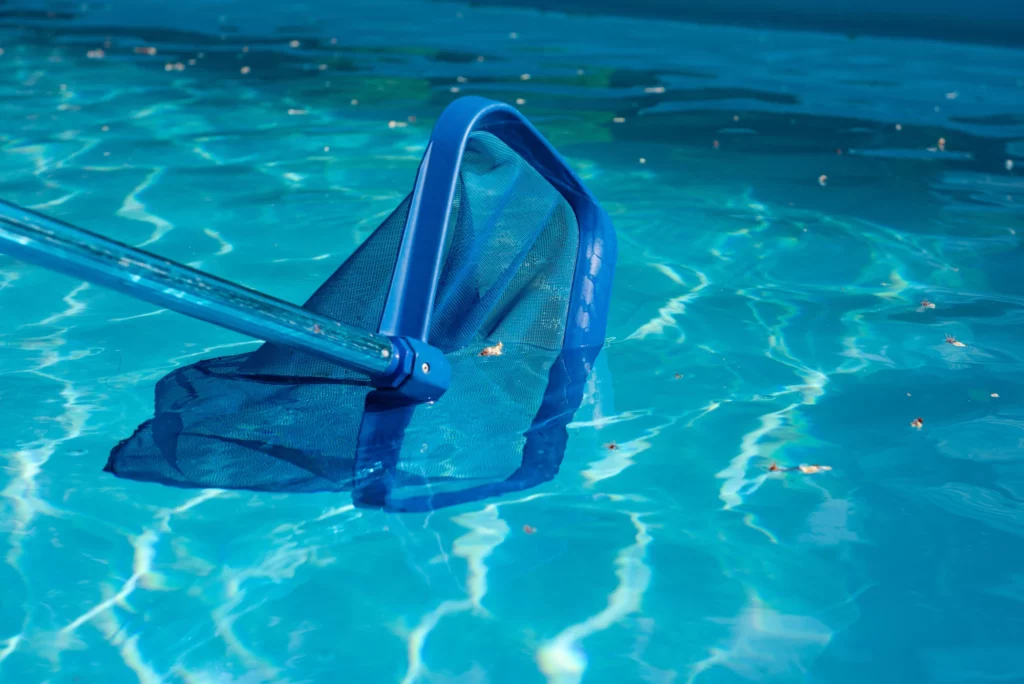
Chemical Balance
Pool maintenance truly is a science, so it’s important to ensure the chemical balance of the water is precise to avoid damaging pool equipment in the long term. Use our tips below to guarantee as many fun pool days with the family as possible and make good on your investment!
- Test and Adjust pH: This will give you a good read on how much acid or base is present in the pool water. You’ll want to try and hit a pH of 7.4 – 7.6 ideally. Use sodium carbonate to increase the pH and muriatic acid to decrease the pH.
- Test and Adjust Total Alkalinity: This acts as a pH stabilizer, and when adjusted correctly, the pH fluctuates less, which is crucial for pool water health. The range to aim for is 80 – 120 ppm. To increase total alkalinity, use sodium bicarbonate or baking soda. To decrease total alkalinity, use sodium bisulfate or muriatic acid.
- Add Sanitizer: This should be familiar even to those that don’t own pools: you’ll want to use a sanitizer like chlorine to kill bacteria. The sweet spot is at 3 ppm. Take care to get this measurement correct, as we know chlorine can be painful and cause skin and eye irritation if used in excess. Salt based pools make sanitization easier than ever – set your salt cell to the correct level and chlorine levels will remain consistent.
- Measure Total Dissolved Solids (TDS): Keep your TDS range below 2,000 ppm as high levels can cause cloudy water, scale formation, and reduce the chlorine’s effectiveness.
- Balance Calcium Hardness: Avoid plaster damage and cloudy water by keeping the calcium hardness balanced and in the range of 200 – 400 ppm.
- Cyanuric Acid (CYA): CYA forms a weak bond with free chlorine in the pool water, protecting it from the sun’s ultraviolet rays to reduce chlorine loss. Properly managed, CYA has been shown to reduce the amount of chlorine needed to maintain the minimum chlorine residual in a pool. The ideal range for cyanuric acid is between 30 and 50 ppm – anything above that reduces chlorine effectiveness and lead to additional issues.
While the above tips on chemical balance can be daunting, do not worry! Whether you’re looking for some help in maintaining your existing pool, or looking into getting one installed, the team at Pools by John Clarkson is available to help! Drop us a line at 904-223-4050 to get started on turning your backyard dream into a reality.
